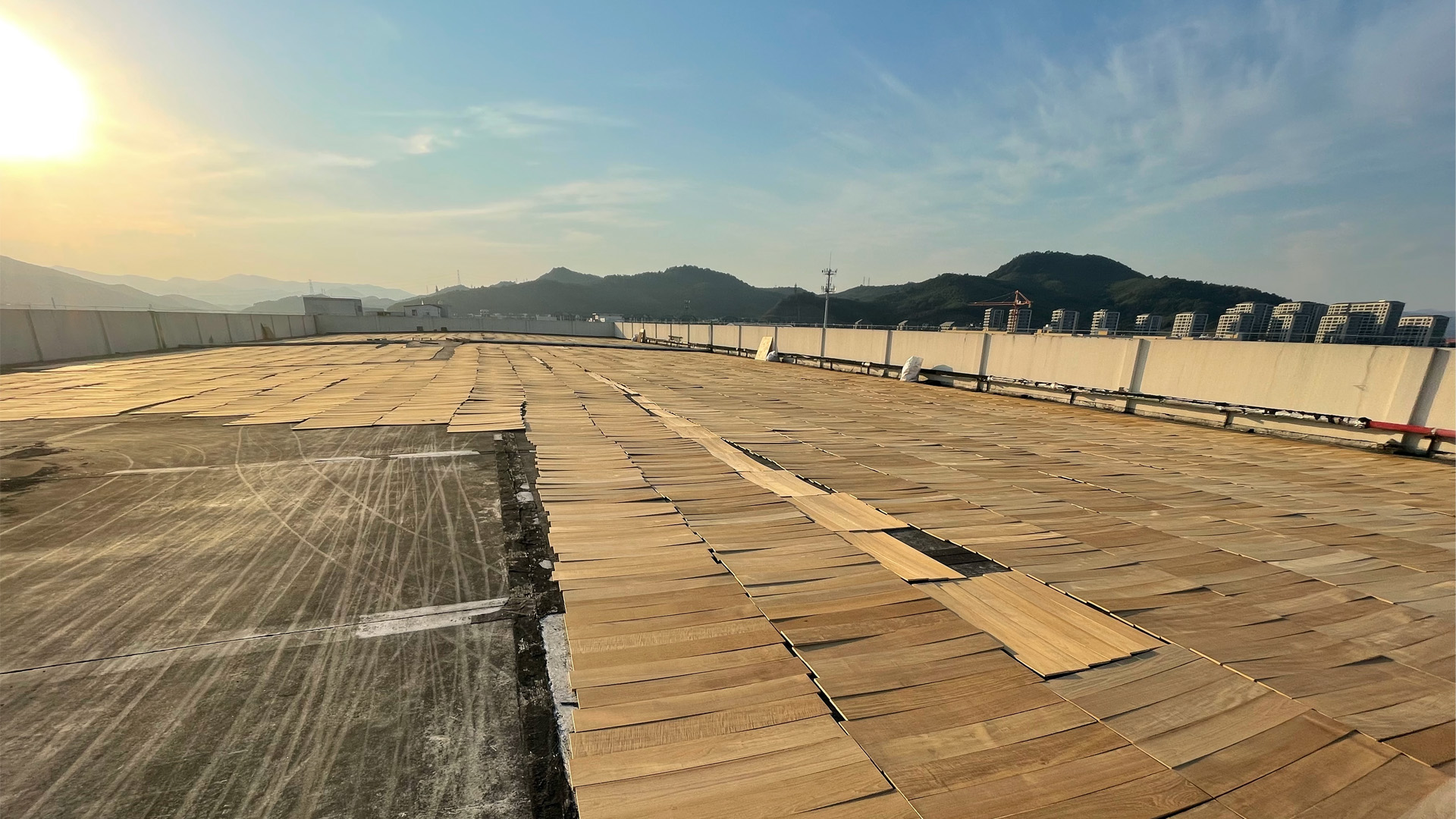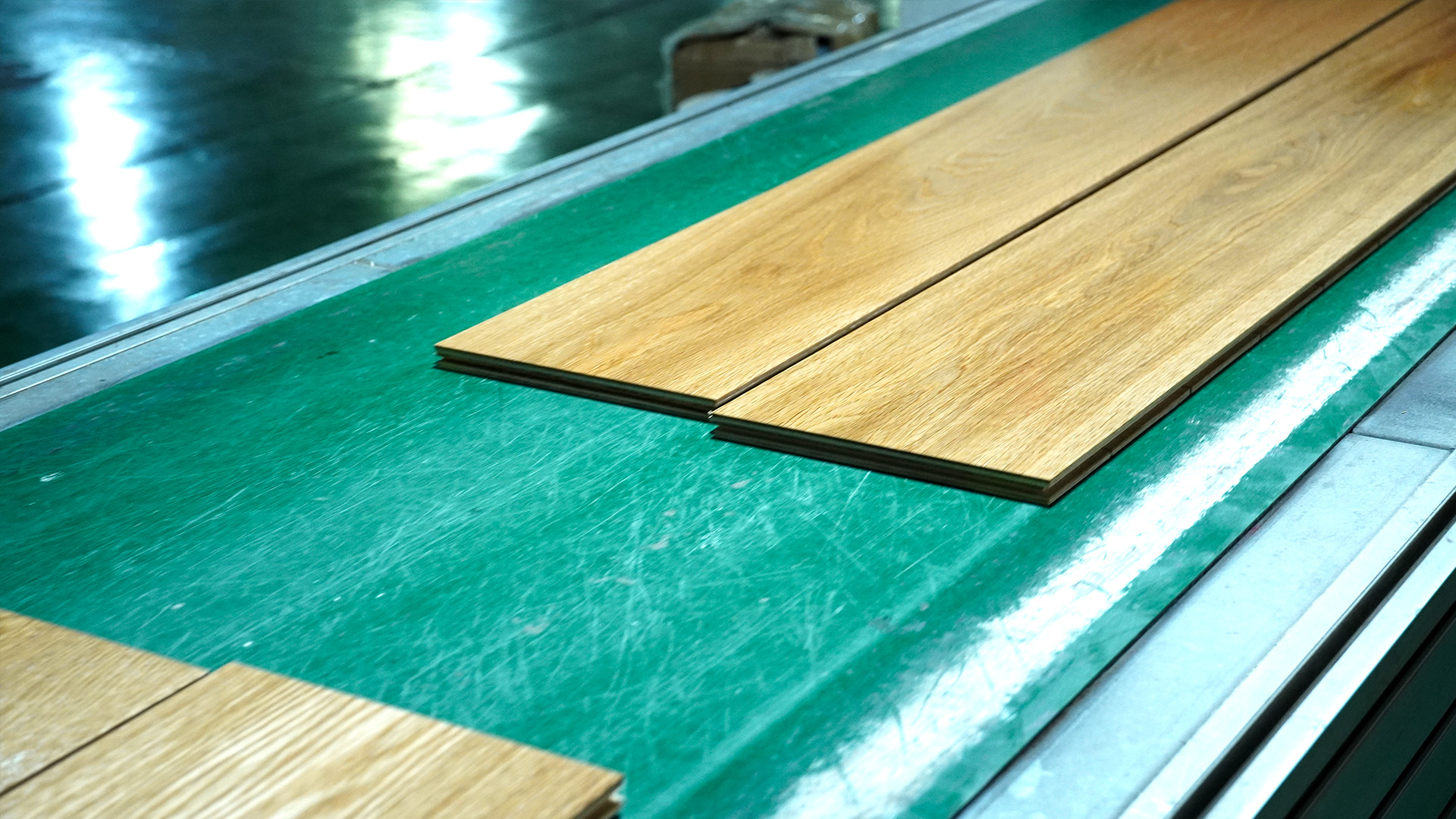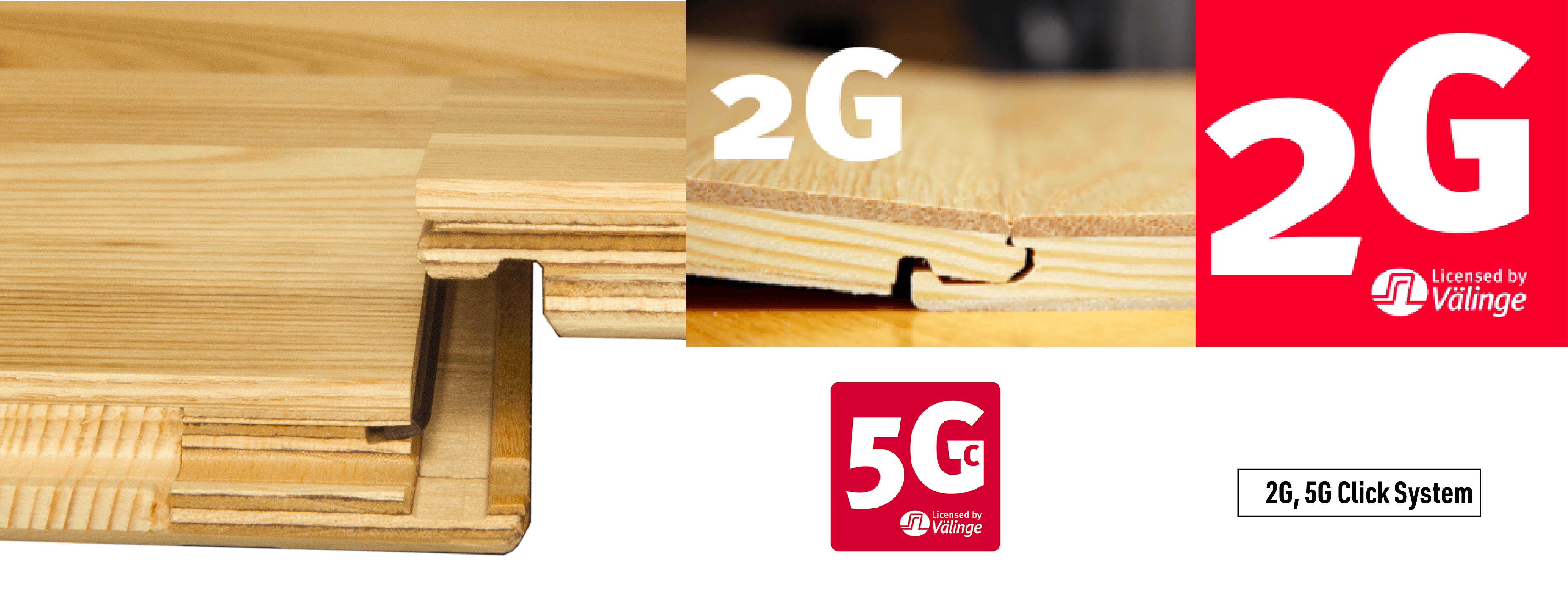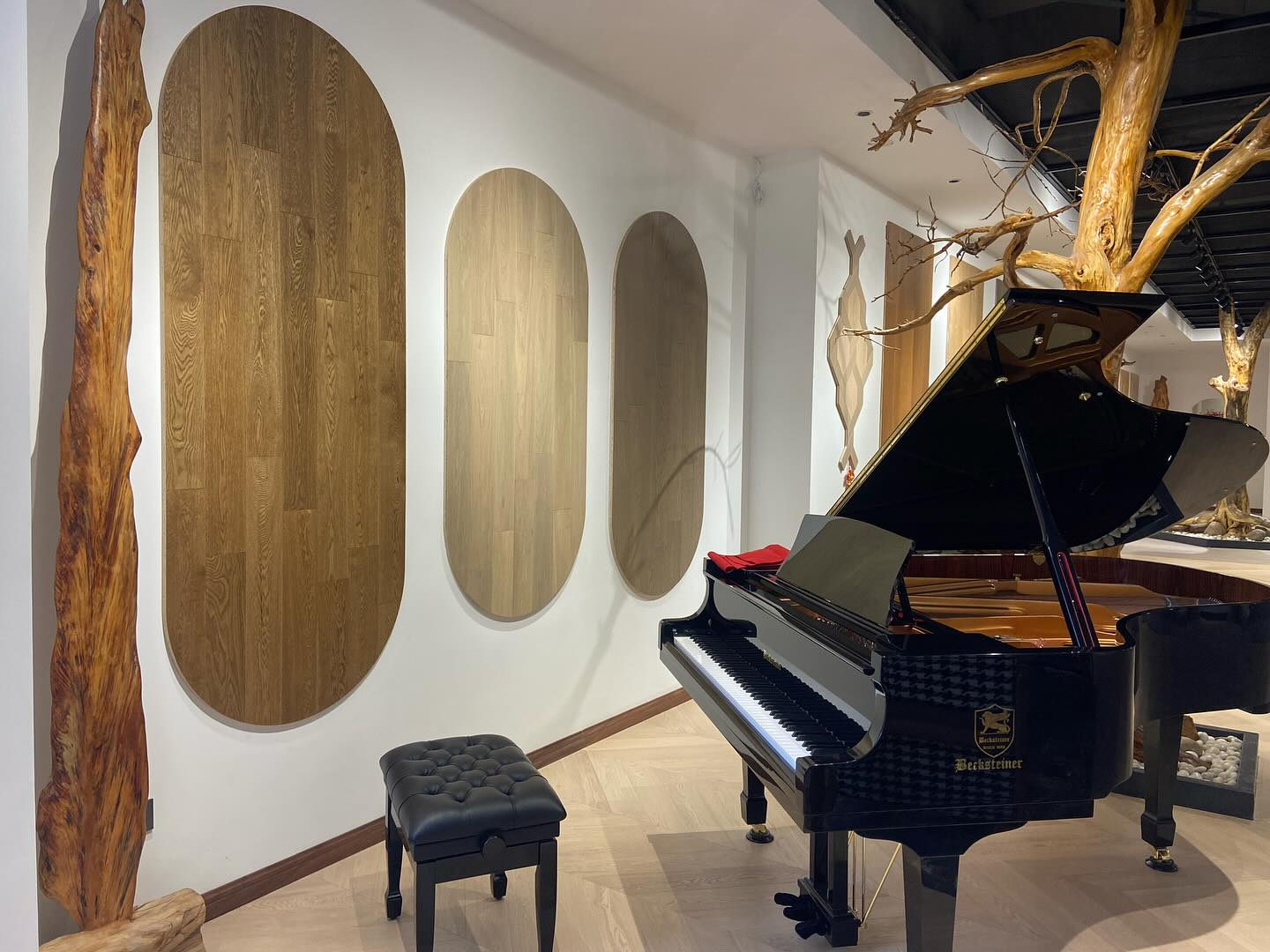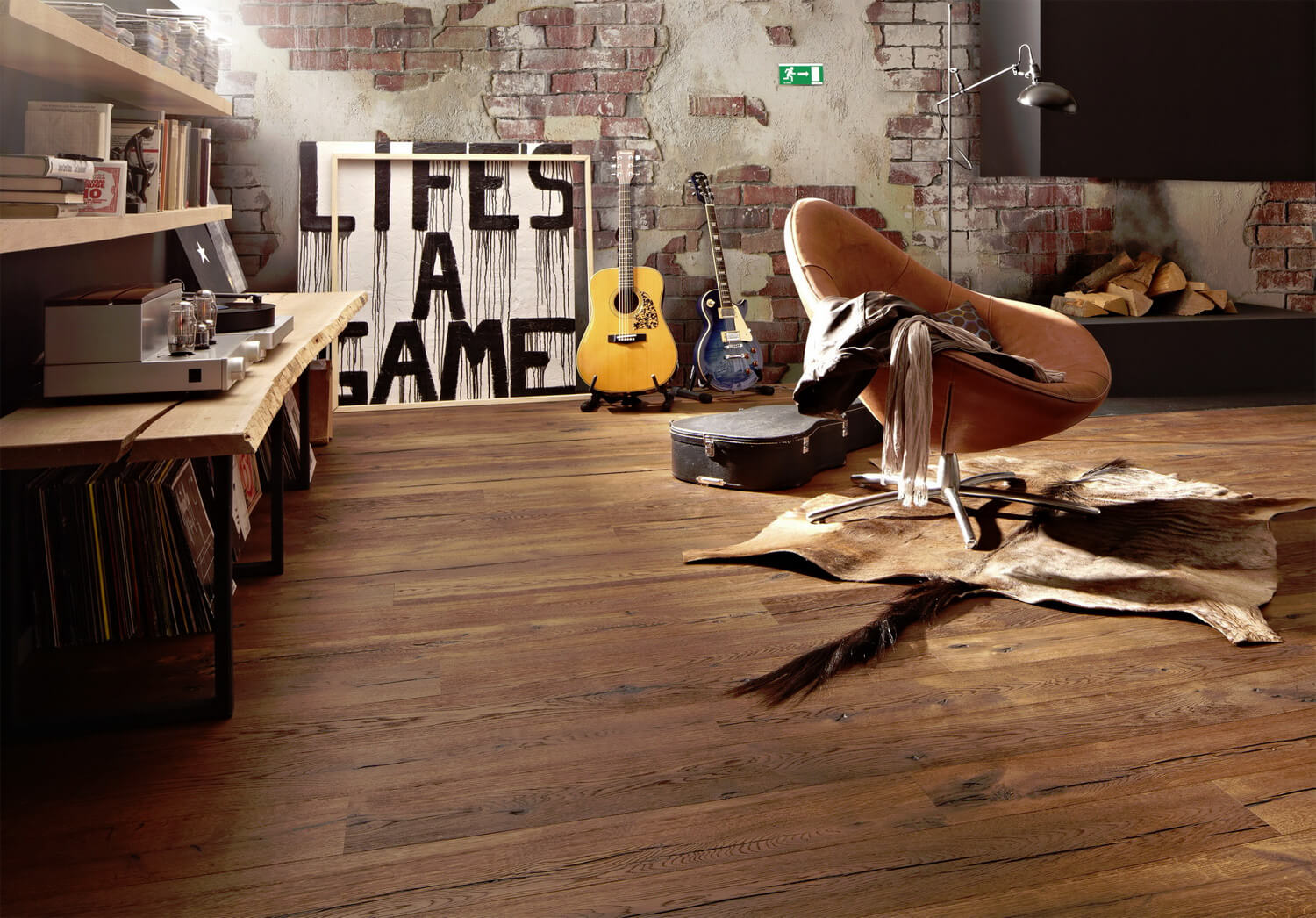
Parquet floors has been used for over a hundred years to give rooms that certain something and to design your floor in a practical and at the same time decorative way. Whether particularly resistant made of hardwood or playfully decorated with coats of arms and ornaments – parquet has many advantages. We will introduce you to popular types of parquet with their respective advantages, disadvantages and peculiarities.
Bamboo Flooring – Still Unknown But Already Popular
In addition to its resilience, it is above all the ecological property that makes bamboo parquet a popular flooring. The particularly fast growing grass ensures that the environment is not permanently damaged. After just a few months, the plant can reach its maximum size and the pipes then begin to lignify. However, it usually takes between four and five years for the wood to harden completely and be felled. As far as sustainability is concerned, there is hardly any other wood that is so strictly cultivated and controlled as bamboo.
The wooden floor usually consists of many individual strips of bamboo. The quality does not suffer as a result. This floor can be treated and sanded in the same way as other conventional woods. The laying of bamboo parquet is either floating or glued over the entire surface. The new flooring can be treated with either lacquers or oils. Bamboo has a very special appearance that is definitely worth it. The tubes are thickened at regular intervals and provide an interesting play of colors and patterns.
You Have These Advantages With A Parquet Floor Made From Bamboo Tubes
The surface of this parquet floor is extremely hard and is therefore ideal for rooms that are very frequently used. Pointed heels or other hazards are not a problem for bamboo because it is resistant to deformation. Differences in humidity are also not a big problem for the resistant floor. Compared to other wooden coverings, this one swells up less often and is therefore less sensitive. The longevity of the floor has the advantage that the intervals between renovation or preparation are particularly long.
Birch Parquet – The Inexpensive Parquet For The Modern, Cozy Home
Birch parquet is a light parquet that is particularly suitable for small living spaces that are supposed to make a big impression. Because the lighter the floor, the larger a room appears. The color of the birch wood changes between a yellowish white and cream-colored tones. When lacquered, birch parquet creates a slightly cloudy impression; when oiled, it creates a silky, shimmering sheen that is reminiscent of mother-of-pearl. Birch parquet is well suited for everyone who loves it cozy, but also modern at the same time.
The wood of European birch mostly comes from Scandinavia or the Baltic States. In this country, birch in the forests has long been regarded as a “non-wood” or even “weed” that is harmful to the forest. The tree owes this somewhat dubious reputation, among other things, to its pioneering character. After storm damage, it is usually the birch trees that colonize the open areas first. Compared to other tree species, the maintenance effort for forest management is also relatively high, with a rather low volume output. For these reasons, the forestry use of the birch in the past was mainly limited to areas such as Finland and Sweden, where other tree species have a hard time. In recent years, however, there has been a rethink in this country. Thanks to their rapid growth, even the lower age groups represent significant stocks of wood.
Birch Parquet Is Particularly Suitable For Living Rooms And Bedrooms
As a naturally light floor covering, birch parquet is often installed in small rooms that should appear larger. This effect can be increased if, instead of small parquet strips, the largest possible strips or even planks are chosen. The light color of the floor optically opens up the room, while the size of the planks and parquet strips suggest a certain amount of generosity. In the overall picture, the room designed in this way appears larger. In combination with modern furniture and fittings, birch parquet creates a fresh atmosphere in which it is easy to live well.
Panel Parquet – The Queen Of Parquet Floors
Probably the most elegant type of parquet is the so-called panel parquet, also known as French parquet. It used to be seen only in magnificent palaces like Versailles. Whether imposing reception halls, magnificent dance halls or splendid salons: particularly noble rooms have always been equipped with this type of parquet. Panel parquet consists of various wooden elements that are joined together to form geometric patterns such as stars, diamonds or cubes and then applied to a square carrier plate, the panel. Often, different types of wood are combined, so that impressive contrasts of colors and grains are created. Skilful laying can be used to create impressive patterns that are particularly eye-catching. The individual panels of the panel parquet are still made by hand today. In this way, individual wishes or historical templates can be implemented in detail during production.
Work With Different Effects And Insert Ornaments
The most popular and most frequently used type of wood for panel parquet is oak. Other woods such as walnut, cherry, maple or teak are also used. A wide variety of effects can be achieved by combining different types of wood. It is also possible to incorporate lettering, coats of arms or other ornaments in this way – the so-called inlays. If inlays are to be incorporated, laser devices are also used during production. These filigree details have to be made very precisely and therefore cannot be produced with CNC milling like the geometric elements of the panel parquet.
Industrial Parquet – An Eye-catcher In The Living Room
Since industrial parquet is made from leftovers from the production of mosaic or strip parquet, it can also be made from all types of wood that are used for mosaic parquet or strip parquet. There is lamellar parquet made of oak, larch, walnut, beech or spruce, among other things. Exotic woods can also be used here. Regardless of which wood is used: The flooring looks very rustic because the surfaces show different color nuances. This can give a room that special flair.
The Advantages Of Industrial Parquet
Industrial parquet is very resilient and stable. It is therefore often installed in heavily frequented areas. But the hard-wearing industrial parquet is also finding its way into living rooms and hallways more and more frequently. It is precisely because of its irregular appearance that it offers an exclusive floor that can give a room that special something. Industrial parquet used to be a waste product and was therefore very cheap. The increasing demand is also driving the price up, which is why it is now usually not much cheaper than the classic multi-layer parquet.
Maple Parquet – That’s What Makes The Popular Classic
Maple parquet has a Brinell hardness of 30 and is therefore one of the medium-hard woods. At the same time, it shines with a high level of elasticity. This makes it particularly resistant to wear and tear, so that maple parquet is particularly durable. However, since maple parquet is not weather-resistant, it is only suitable for indoor use. In addition, maple wood has very small pores and is therefore easy to clean. But not only the structural properties are responsible for the great popularity of maple parquet. The grain of maple parquet is very even and subtle and is white to cream-colored, with Canadian maple also slightly reddish. With this look, maple parquet gives rooms a warm and friendly atmosphere and creates a generous overall impression of the room.
Other Advantages Of Maple Parquet
Thanks to its even grain and light look, maple parquet goes well with many different furnishing styles. As a plank, it fits perfectly into a rural ambience; It gives modern living spaces a touch of cosiness and warmth. The easy-to-work maple parquet can also be specifically adapted to specific furnishing requirements by staining, oiling, varnishing or coloring. Like other types of wood, maple parquet darkens when exposed to sunlight.
Parquet Made From Oak Wood
The wood of the oak is equally popular with furniture makers, house builders and parquet manufacturers: craftsmen have valued the hard and durable wood of the local tree for centuries. It can be found not only in closed rooms, but also in outdoor areas. It is also versatile: parquet made of oak is available in numerous different color variants. There is the perfect floor for your own home for every taste.
The Advantages And Characteristics Of Oak Parquet
The classic, natural oak floor is light, has a soft grain and slightly darker knotholes. It fits perfectly in almost every room and every decoration. However, various treatments, such as lime or oils, can give the oak planks numerous different colors. There is light oak, for example, where the parquet is brushed and then treated with light-colored oils. Different effects arise. The same applies to darker color variants: They are oiled blue or brown, for example, but in most processing variants they are smoked beforehand. This creates a wide range of dark woods from brown to blue to black. The floor suits both rustically furnished apartments, in which there is a lot of wood, as well as modern furnishings with a lot of steel and glass.
Oak is one of the particularly durable types of parquet because it is particularly hard and resilient. However, with oak, as with other parquet floors, the following applies: The humidity in the room should not be too high, otherwise the wood will swell. It should also be wiped with a damp cloth and vacuumed with a special vacuum cleaner attachment to avoid scratches from small stones or brushes that are too hard . Contrary to popular belief, oak can also be used in the bathroom. To do this, however, it must be specially sealed. Not every oak parquet is automatically suitable for use in rooms with high humidity.
Longstrip Parquet – The Popular Classic
The term ship floor parquet does not refer to the material of a wooden floor or the area where it is used, but a certain way of laying parquet. The individual wooden planks are laid parallel to each other, slightly offset. This laying pattern is reminiscent of old ship decks and in fact the Vikings made their ship floors in this way. But not only in the far north of the maritime furnishing style has many enthusiastic followers. In addition to vintage furniture, special wallpapers and decorative objects, you can also bring a touch of maritime lifestyle into your own four walls with ship floor parquet. From modern to rustic, ship floor parquet also harmonizes with any other furnishing style. Longstrip parquet is intended to bring the rustic charm of old sailing ships into living areas.
The Advantages Of 3-strip Parquet
Longstrip parquet is available in different designs, from high-quality solid parquet to cheaper prefinished parquet. The great popularity of 3-strip parquet and the associated high demand ensure that almost everyone, regardless of their budget, can look forward to this special flair these days.
Any type of wood commonly used for parquet is suitable for 3-strip parquet. From light woods such as beech or birch to the darker oak to the reddish noble cherry. There are no limits to personal taste and ship floor parquet can be combined with any furnishing style, because the parallel laying pattern makes ship floor parquet particularly calming and gives every room a relaxing look. In addition, this laying pattern is particularly suitable for smaller, stocky rooms, as these can be optically stretched by ship floor parquet.
Veneer Parquet – A Cheaper Alternative
The veneer is a thin sheet of wood that is cut directly from the trunk. A special sawing process is necessary. The term comes from the French word “fournir”, which means “to equip”. In the 16th century, ordinary, local wood began to be equipped with a thin layer of fine wood. Similar to a laminate floor, the veneer parquet is made up of three layers. An HDF board, i.e. a high-density fiber board, usually serves as the basis. A particularly hard plate made of highly compressed wood fibers is placed on top. This is the backing layer. Finally, the thin wear layer is visible at the very top. Only this wear layer is made of real wood and is usually around a millimeter thick. This wear layer is the so-called veneer. Finally, it is glued to the compacted panels. Expensive precious woods are often used.
There is veneer parquet in the country house style or in the style of ship parquet. There are matt and glossy lacquered versions, as well as colored and oiled woods. Veneer parquet can be particularly interesting if you are primarily interested in a noble and rare precious wood. Because for a floor with precious wood veneer, the need for the expensive wood is much lower – fewer trees have to be felled and the price is not as high as for a solid wood floor made of precious wood.
The Advantages And Disadvantages Of Veneer Parquet
Veneer parquet has a number of advantages, especially for those on a budget:
- The veneer parquet is cheap, the price-performance ratio is very good
- The floor is suitable for rented apartments or children’s rooms if you don’t want to invest a lot of money there
- The construction height of veneer parquet is very low. It is well suited for renovating old buildings
- The veneer parquet is not as susceptible to temperature fluctuations as solid wood parquet
- Laypeople can install it themselves relatively easily thanks to a click system
A major disadvantage of veneer parquet is that it cannot of course be sanded down. Because under the one millimeter thin layer of wood there is only fiberboard. This is the disadvantage compared to solid parquet or even prefabricated parquet, which are more expensive, but can also last for a much longer period of time.
Multi-layer Parquet – Prefabricated Parquet With A Completed Surface Treatment
Multi-layer parquet is an alternative to solid parquet on the one hand and laminate on the other. It is ideal for everyone who wants to avoid the effort of laying and maintaining solid parquet without having to make the compromises that the laminate requires in terms of quality, durability and stability.
Multi-layer parquet can consist of three layers, but they are also available as two-layer strips. The top layer of the multi-layer parquet is always made of solid wood. This is an essential difference to laminate. Its surface consists of an overlay with a mostly photo-technically implemented Dekr, which is usually created by compressed layers of paper and synthetic resin.
The Advantages And Disadvantages Of Multi-layer Parquet Compared To Solid Parquet
Advantages of the multi-layer parquet:
- Price: Thanks to cheaper components, multi-layer parquet is usually cheaper than solid single-layer parquet.
- Easy to lay: Typically, the parquet elements of the multilayer parquet are provided with tongue and groove. This means they can be laid very quickly. Both systems for gluing and click systems are available, in which the panels are simply plugged together and snap into one another.
- Less sensitive to temperature and humidity fluctuations: Since the layers are glued and pressed together, the shrinkage and swelling of the wood is less with multi-layer parquet than with classic parquet.
- No post-treatment necessary after laying: the running layer of the panels is supplied already oiled, waxed or painted. After laying, nothing more needs to be sanded down or processed.
- Replacing damaged modules: While solid parquet should be glued to the sub-floor, you can also lay the multi-layer parquet variant floating. This gives you the advantage of being able to replace and renew individual parts if necessary.
Disadvantages of multi-layer parquet:
- Reconditioning the wear layer is not always possible: While solid parquet can be sanded down many times without any problems and renewed, this is only possible with a thick wear layer with multi-layer parquet. If you want something from your parquet for as long as possible, you should therefore always ask about the thickness of this layer.
- Laying pattern: Once the laying pattern of the surface has been selected, it can no longer be changed. Individual adaptation of the parquet to the lighting conditions in a room cannot be as targeted as is the case with solid parquet.
Parquet Made Of Tropical Wood – Enjoy Exclusive Woods With Caution
Tropical woods are a rather unusual sight in European latitudes. They are rarer here and therefore also have something very exclusive. Floors made from these materials are often more expensive than parquet made from European woods. This pays off in terms of appearance, however, if you prefer the texture and color of teak or doussie.
Pay Attention To Sustainability
However, when buying such a parquet floor you should pay attention to the origin and not buy it as cheaply as possible. The noble woods are imported to Germany from South Asia, South America or Africa to make exclusive parquet. However, there are black sheep among the suppliers: wood is felled and exported for quick money – without paying attention to sustainability. This destroys entire forests and leads to an ecological catastrophe that affects the whole world and not just the distant regions. Those who opt for a wooden floor often choose it precisely because it is sustainable and environmentally friendly. It would be annoying if you contribute to the destruction of the rainforest with your purchase.
But that doesn’t mean that Europeans have to do without tropical woods entirely. Rather, you should only pay attention to which wood you buy. There are now seals and certificates that show that wood comes from sustainable forest management, who delivered it and where it was processed into parquet flooring. If you pay attention, you can be sure that you have bought an exclusive floor from an ecological, sustainable and social point of view.
Renowned manufacturers of parquet floors pay close attention to the origin of their wood. Leading companies mostly certify their tropical wooden floors and often also check the conditions under which the trees are felled on site. It’s not just about sustainability, but also about fair wages and working conditions.
If you want to buy a parquet floor made from tropical woods, you should therefore find out more carefully and pay attention to the certification of the floor. Do not be afraid to ask your dealer about the exact origin and the respective seals. But this does not only apply to tropical woods. Parquet made from local wood should also be obtained sustainably. Here, too, it is worth taking a look at the certifications – and in case of doubt, inquiries are appropriate.
Herringbone Parquet – An Elegant And Timeless Classic
Herringbone parquet is still a popular laying pattern for parquet floors today. The popular pattern copies the arrangement of the bones in the fish skeleton and is known from prehistoric times. The herringbone parquet is particularly valued for its versatility. It can be combined with many modern furnishing styles and, thanks to new materials and laying techniques, offers even more application possibilities in robust quality. The herringbone parquet in its current form is a mixture of centuries-old craftsmanship and the blessings of industrialization.
Herringbone parquet can be laid with several variants in the pattern design, which offer interesting effects depending on the size of the room and the incidence of light. It is characteristic of all laying variations that the individual bars are aligned in an orderly bond at regular angles to one another.
The herringbone pattern in its simple form with two rods arranged at right angles at the top forms the basis for this. This basic pattern can be made even more dynamic by arranging two or three rods at a time. The use of different colored bars gives the pattern additional prominence. In order to be more attractive and not to dominate the spatial design too much, this varied herringbone parquet is preferably laid in large rooms.
The Advantages Of Herringbone Parquet At A Glance
- Versatile: Herringbone parquet can be laid in both private and public spaces of all sizes.
- Can be combined with different furnishing styles: The laying pattern impresses with its classic elegance, which ideally complements modern, rustic and minimalist room furnishings.
- Excellent mechanical properties: The laying pattern compensates for the swelling and shrinking behavior of parquet wood and also distributes large loads optimally.
- Interesting contrasts in the pattern possible: Different laying variations and types of wood offer a wealth of individual options.
Can make rooms appear larger: By laying them horizontally or lengthways, rooms can optically gain in width, length or depth.
Cork parquet in wood look
To produce cork parquet, the bark cut from the cork oak is pressed and first processed into a large, solid block of cork. Fine slices are then peeled from this block. These cork veneers can now be drawn on the parquet. Usually, an HDF carrier layer is usually used for this today. The actual veneer layer made of cork is often only 2.5 millimeters thick. However, this is enough to be able to enjoy the positive properties of cork. Inspired by the triumphant advance of laminate, easy-to-install click systems have long since established themselves in cork parquet. They enable glueless and floating installation.
The advantages and disadvantages of cork parquet
Cork parquet has the reputation of being a floor covering with a particularly warm, even cozy look. In fact, one of the outstanding properties of cork is that it insulates heat excellently and thus guarantees a floor that is always warm to the feet. This is by no means all of the advantages of the material obtained from the bark of the cork oak. The cells of the bark consist of around 90 percent air. This is what makes the material so incredibly elastic, gentle on the joints and naturally sound-insulating. Nevertheless, cork is robust and abrasion-resistant and easy to clean. It is also suitable for allergy sufferers, is antistatic and flame retardant. In short: cork is simply made to turn it into elegant floor coverings.
Wooden Paving (end Grain Parquet) – Extremely Resilient And Modern
The idea of wooden paving is basically ancient. Instead of using wood cut parallel to the fiber for the flooring, so-called end-grain wood is used. This is wood that is cut across the grain. If you imagine a tree trunk, the wood is not cut along the growth, but rather the trunk is divided into blocks.
The advantages and disadvantages of end-grain parquet
The high resistance of end grain is complemented by extreme resilience. Typical applications of wood paving parquets are found in floors in factory halls, gymnasiums, churches and generally in rooms with a lot of public traffic. In outdoor areas, wooden paving can even withstand vehicle and forklift traffic. In interiors, end grain parquet is particularly good as thermal and footfall sound insulation.
